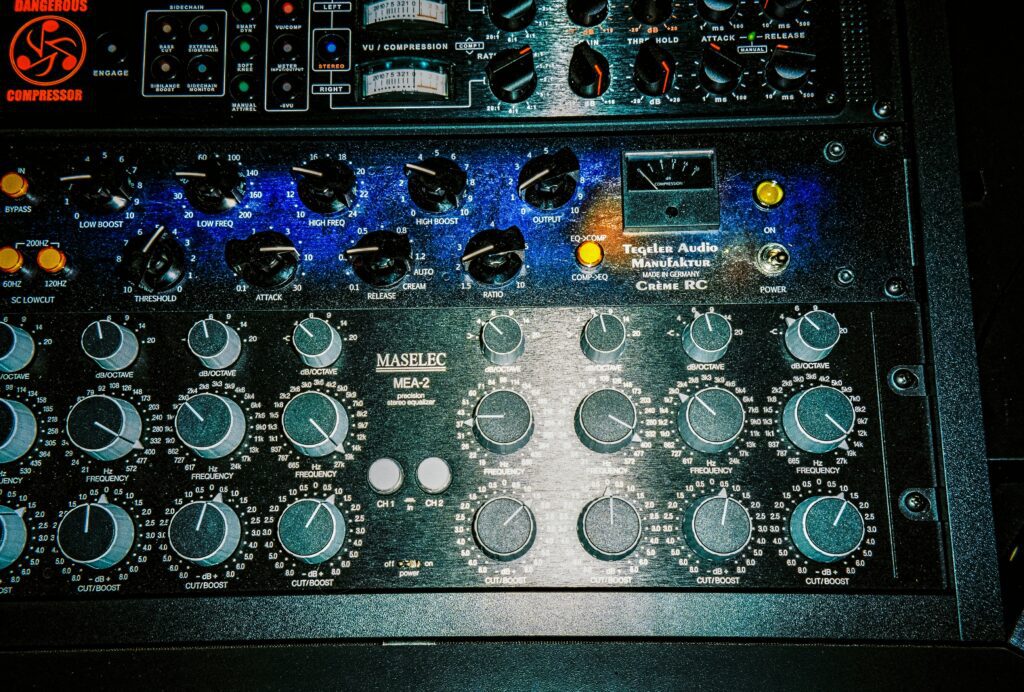When it comes to audio production, the roles of mixing and mastering engineers are distinct but equally important. While both processes involve shaping and enhancing the sound, mastering engineers have their own set of specialized tools that are not commonly used by mixing engineers. In this article, we will explore the types of audio gear that mastering engineers rely on to achieve their sonic magic.
1. Mastering Equalizers
Equalization plays a crucial role in both mixing and mastering, but mastering engineers often have specialized equalizers designed specifically for their craft. These mastering-grade equalizers are known for their precision and transparency, allowing engineers to make surgical adjustments to the overall tonal balance of the mix. They often feature advanced parametric controls, M/S (mid-side) processing capabilities, and surgical notch filters to address specific frequency issues with utmost precision. Mastering equalizers are usually stepped so that it’s easier to recall the settings.


2. Multi-Band Compressors
While mixing engineers also use compressors, mastering engineers often employ multi-band compressors to have greater control over the dynamics of the mix. Multi-band compressors divide the audio signal into different frequency bands, allowing engineers to apply compression independently to each band. This enables them to target specific frequency ranges and address any imbalances or inconsistencies in the mix without affecting the rest of the frequencies.
3. Stereo Imaging Processors
Achieving a wide and immersive stereo image is crucial in mastering, as it contributes to the overall perceived depth and clarity of the mix. Mastering engineers utilize specialized stereo imaging processors to manipulate the stereo width and enhance the sense of space in the mix. These processors offer precise control over the stereo field, allowing engineers to adjust the width of specific frequency ranges and create a well-balanced and immersive listening experience.
4. High-End Limiters
Limiting is a vital process in mastering to ensure that the final mix meets industry loudness standards and remains competitive in various playback environments. Mastering engineers utilize high-end limiters that are specifically designed to handle the dynamics of full mixes. These limiters offer transparent and precise control over the peak levels of the mix while maintaining the integrity of the original sound, allowing engineers to achieve optimal loudness without sacrificing the dynamics or introducing unwanted artifacts.


5. Mastering Converters
Mastering-grade AD/DA converters are essential tools for mastering engineers. These converters are responsible for capturing the integrity of the audio signal and have a significant impact on the overall sound quality of the final master. Mastering converters are typically two channels and made up of the highest quality components available. They ensure that nothing is degraded from the original mix and provide crystal-clear A/D and D/A conversion. The choice of converters can vary depending on the engineer’s preferences and the desired sonic characteristics.
6. Mastering Consoles and Monitors
Mastering consoles and monitors are crucial components of a mastering studio setup. While mixing consoles are commonly used by mixing engineers, mastering consoles offer additional features and precision control tailored for the mastering process. These consoles provide advanced routing options, precise monitoring capabilities, and often integrate seamlessly with other mastering gear. Additionally, mastering engineers invest in high-quality reference monitors and create acoustically treated listening environments to accurately evaluate the nuances of the mix.
By utilizing specialized audio gear such as mastering equalizers, multi-band compressors, stereo imaging processors, high-end limiters, mastering converters, and mastering consoles and monitors, mastering engineers can achieve the highest level of sonic excellence and bring out the full potential of the mix.